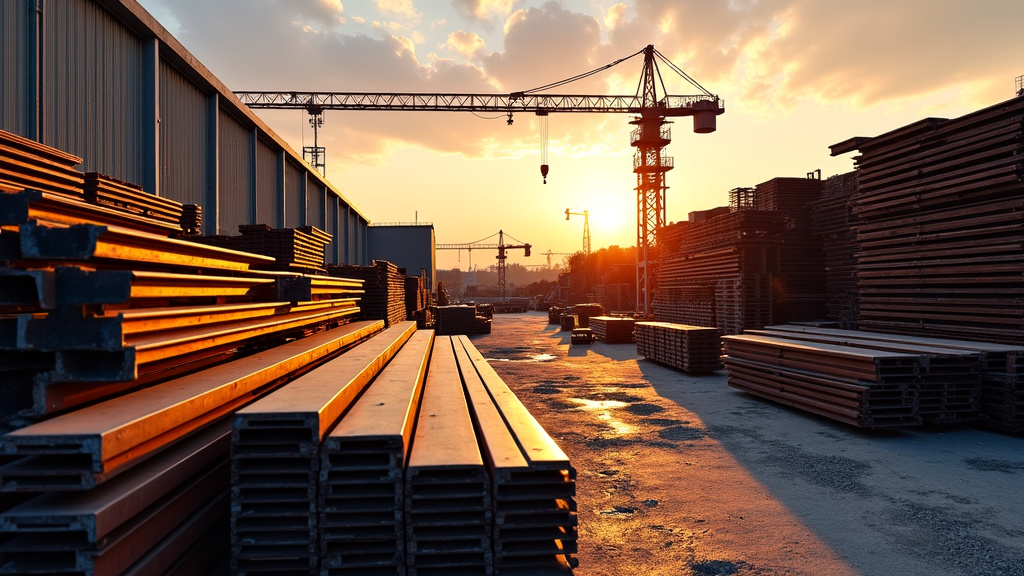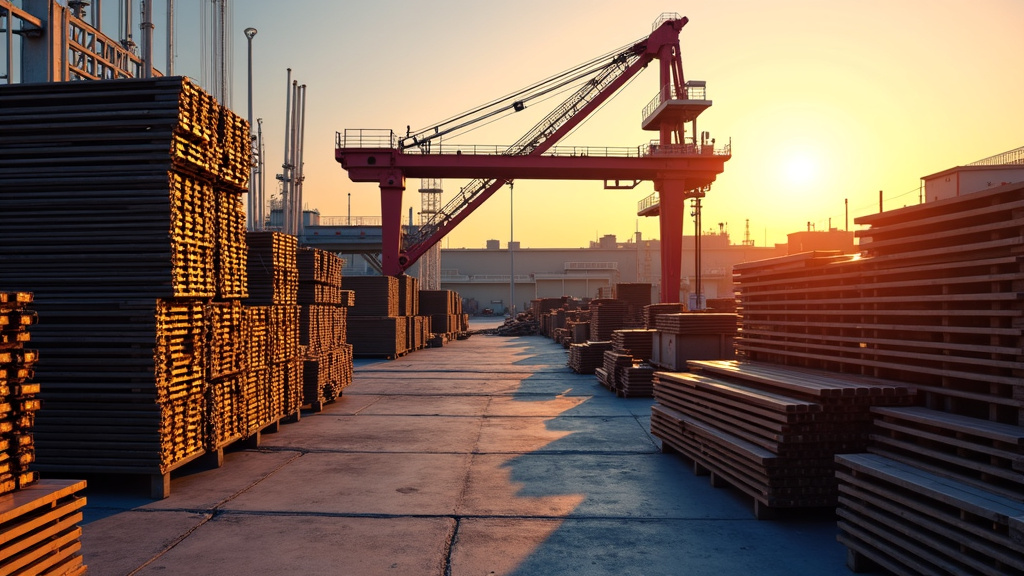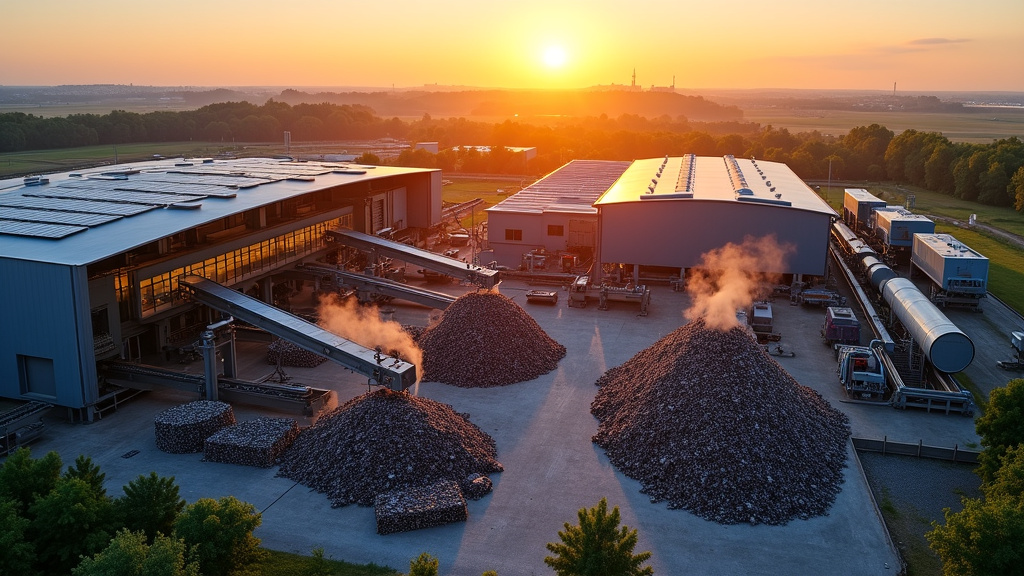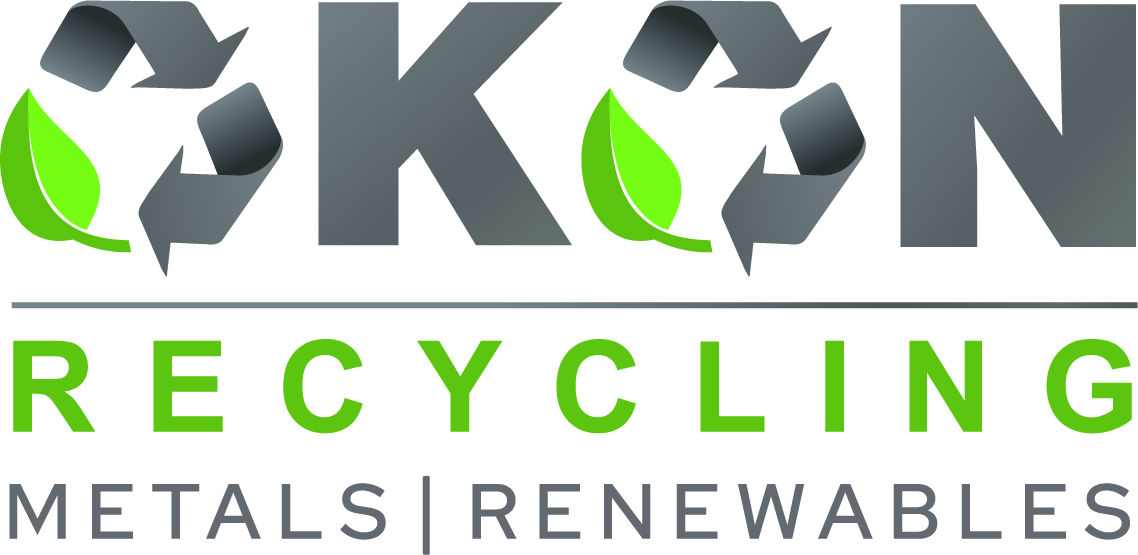5901 Botham Jean Blvd, Dallas, TX 75215
Understanding Steel Salvage Prices: A Quick Guide
April 15, 2025How much impact do fluctuating steel salvage prices have on the global recycling industry? This question resonates throughout scrapyards, steel mills, and recycling centers worldwide. Steel salvage prices play a pivotal role in shaping the economics of metal recycling, influencing decisions made by suppliers, buyers, and manufacturers alike.
As sustainability becomes increasingly important, understanding the intricacies of steel salvage prices is crucial. These prices not only reflect the health of the recycling sector but also serve as a barometer for broader economic trends and environmental initiatives.
The global steel scrap market, valued at 655 million metric tons in 2023, is projected to reach 1,050 million metric tons by 2033, according to a report by Fact.MR. This growth, at a steady CAGR of 4.9%, underscores the increasing importance of salvaged steel in our resource-conscious world.
In this comprehensive guide, we’ll explore the myriad factors influencing steel salvage prices, from global economic conditions to technological advancements in recycling processes.
Factors Influencing Steel Salvage Prices

The steel salvage market is a complex ecosystem influenced by various interconnected factors. Understanding these elements is crucial for both buyers and sellers to navigate the market effectively and maximize their returns. Here are the key factors shaping steel salvage prices:
Global Demand and Economic Conditions
The global demand for steel plays a pivotal role in determining salvage prices. When economies are booming and construction projects are in full swing, the demand for recycled steel increases, driving up prices. Conversely, during economic downturns, prices may fall.
For instance, in early 2021, as economies began recovering from the COVID-19 pandemic, steel salvage prices surged due to increased construction and manufacturing activities. The price of HMS 1/2 80:20 scrap in Turkey jumped to $355 per ton, reflecting the global uptick in demand.
Scrap Quality and Composition
Not all steel scrap is created equal. The quality and composition of the salvaged material significantly impact its value. High-quality scrap with minimal impurities and a desirable blend of alloying elements commands premium prices.
For example, clean, heavy melting steel (HMS) grades are typically more valuable than lighter, more contaminated scrap. Buyers are willing to pay more for scrap that requires less processing and yields higher-quality recycled steel.
Transportation Costs
The cost of moving steel scrap from collection points to recycling facilities and steel mills is a crucial factor in pricing. Rising fuel prices or logistical challenges can reduce profit margins, affecting the final price offered for salvaged steel.
A real-world example of this impact occurred in 2008 when soaring oil prices led to a significant increase in transportation costs. This surge caused some recyclers to lower the prices they offered for scrap metal to offset their increased expenses.
Supply Chain Dynamics
The availability of scrap metal and the efficiency of the supply chain can cause price fluctuations. Disruptions in the collection, processing, or distribution of steel scrap can lead to supply shortages and price spikes.
During the early stages of the COVID-19 pandemic in 2020, many scrap yards and collection centers temporarily closed or reduced operations. This disruption in the supply chain led to a brief period of scarcity and price volatility in the steel salvage market.
Geopolitical Factors and Trade Policies
International trade policies, tariffs, and geopolitical events can have far-reaching effects on steel salvage prices. Changes in import/export regulations or political tensions between major steel-producing nations can quickly ripple through the global market.
For example, when the United States imposed tariffs on steel imports in 2018, it indirectly affected the domestic scrap market. The increased demand for U.S.-produced steel led to a higher demand for locally sourced scrap, influencing salvage prices.
Understanding these factors and their interplay is essential for anyone involved in the steel salvage industry. By staying informed about global economic trends, quality standards, transportation costs, supply chain dynamics, and geopolitical developments, market participants can make more informed decisions and navigate the ever-changing landscape of steel salvage prices.
Current Market Trends in Steel Salvage
The steel salvage market is in constant flux, with prices shifting due to a complex mix of global and local factors. Recent trends highlight a dynamic environment that demands close attention from industry stakeholders. As of early 2025, the market has seen a notable increase, with global scrap prices rising by 1.5-2% after a period of decline.
This resurgence is driven by several key factors. Chief among these is the increasing demand from steel producers, particularly as the shift towards greener steel production gains momentum. The steel industry’s growing focus on sustainability has led to greater use of recycled scrap, further boosting demand. Additionally, supply chain adjustments and logistical challenges have created bottlenecks in scrap availability, putting upward pressure on prices.
However, regional variations persist. While markets in Turkey and Europe have seen gradual price recoveries due to limited supply and stronger domestic demand, China’s scrap market has experienced a decline, largely due to weak steel demand and high inventories. The U.S. market, meanwhile, has seen a more significant increase, with scrap prices rising by 4.3% since the start of the year.
Global Factors Influencing Steel Salvage Prices
Several global factors continue to shape the steel salvage market:
- Economic Growth: The overall health of the global economy, especially in construction and manufacturing sectors, directly affects steel and scrap demand.
- Sustainability Initiatives: Increasing focus on green steel production is driving up demand for high-quality scrap metal.
- Geopolitical Tensions: Trade policies, sanctions, and regional conflicts can disrupt supply chains and affect international scrap trade volumes.
- Energy Costs: Fluctuations in energy prices, particularly in regions like Europe, influence steel production costs and, consequently, scrap demand.
- Currency Fluctuations: Exchange rate volatility can affect the competitiveness of scrap in international markets.
Understanding these patterns is crucial for stakeholders looking to make informed decisions in this volatile market. As industry forecasts project the global steel scrap market to grow from 655 Million Metric Tons in 2023 to 1,050 Million Metric Tons by 2033, staying informed about market dynamics becomes increasingly important.
| Region | Price Change | Current Price | Notes |
|---|---|---|---|
| Turkey | +1.7% | $355 per ton | Recovery in February 2025 |
| US | +4.3% | $330.5 per ton | Strong domestic demand |
| China | -4.5% | $325.8 per ton | Weak steel demand |
| Germany | +1.7% | €302.5/t | Stable market |
| Italy | +2.2% | €345/t | Limited supply |
Looking Ahead: Market Outlook
While the recent price recovery is encouraging, the market outlook remains cautiously optimistic. Experts predict that scrap prices will likely remain firm or experience gradual increases throughout 2025. However, potential economic slowdowns in major markets could introduce volatility. Key factors to watch include:
- Ongoing global infrastructure and construction projects
- Developments in environmental policies and trade regulations
- Technological advancements in scrap processing and steel production
- Shifts in global trade patterns and regional demand dynamics
For industry participants, staying informed about these trends and maintaining flexibility in operations will be crucial. Regular monitoring of market indicators, policy changes, and technological developments can provide a competitive edge in navigating this complex market landscape.
As the steel industry continues its journey towards greater sustainability and efficiency, the role of steel salvage in the global supply chain is set to grow. By keeping a pulse on current market trends and future projections, stakeholders can position themselves to capitalize on opportunities while mitigating risks in this ever-evolving sector.
Maximizing Value in Steel Salvage Transactions

In steel recycling, savvy buyers and sellers know timing is crucial. The key to profitable steel salvage transactions lies in understanding market fluctuations, recognizing quality grades, and fostering strong industry relationships. Explore some actionable strategies to maximize your steel scrap deals.
Timing Your Transactions for Maximum Profit
The steel market is notoriously volatile, with prices swinging dramatically based on global economic conditions, supply chain disruptions, and geopolitical events. To maximize profits, it’s essential to stay informed about market trends.
Use online resources and industry publications to track steel prices. Selling when the market is strong can yield maximum returns. For buyers, the opposite strategy applies – purchase when prices dip.
Consider holding onto your scrap if you expect a price increase, but be cautious of storage costs affecting your profits. It’s a delicate balance requiring constant market awareness and strategic forecasting.
Understanding Grade Classifications: Quality Equals Cash
Not all steel scrap is created equal. Understanding the various grade classifications can significantly impact your bottom line. Steel grades are typically categorized by composition, cleanliness, and density.
Sellers should sort scrap into appropriate grades before selling for higher payouts. Buyers need to be familiar with these classifications to ensure they’re obtaining the quality required for their applications.
Common steel scrap grades include:
- #1 Heavy Melting Steel (HMS): Clean, thick-gauge steel
- #2 HMS: Lighter gauge with more attachments
- Shredded scrap: Processed and shredded for easy melting
- Busheling: Clean, industrial steel scrap
- Plate and Structural: Heavy steel sections and plates
Building Relationships with Reputable Recycling Partners
In the steel salvage business, who you know can be just as important as what you know. Cultivating relationships with reputable recycling partners can lead to better deals, more consistent transactions, and insider market knowledge.
Sellers may receive premium prices from trusted buyers for reliable, high-quality scrap. Buyers benefit from suppliers who consistently provide well-sorted, clean material. These relationships often result in preferential treatment when market conditions tighten.
Networking at industry events or joining professional associations can provide valuable insights and business opportunities.
Checklist for Maximizing Steel Salvage Value
To ensure you’re getting the best value in your steel salvage transactions, follow this handy checklist:
- Research current market prices and trends
- Sort and grade your scrap meticulously
- Clean your scrap to remove non-metallic contaminants
- Weigh your material accurately before transactions
- Compare prices from multiple buyers or sellers
- Negotiate based on current market conditions
- Consider transportation costs in your calculations
- Maintain detailed records of all transactions
- Stay informed about industry regulations and compliance requirements
- Regularly reassess your strategy based on market changes
By implementing these strategies and staying vigilant, both buyers and sellers can maximize the value of their steel salvage transactions. Success in this industry comes from a combination of market knowledge, quality control, and strong professional relationships. Stay informed, stay connected, and watch your profits grow in the ever-evolving world of steel recycling.
The Environmental Impact of Steel Recycling

At the core of steel recycling’s environmental impact is its ability to drastically cut energy consumption. Recycling steel saves 75% of the energy needed to create steel from raw materials. This efficiency directly reduces greenhouse gas emissions, making steel recycling a powerful tool against climate change.
The reduction in CO2 emissions is a compelling argument for steel recycling. For every ton of steel recycled, about 1.5 tons of CO2 emissions are avoided. This statistic underscores the crucial role of steel recycling in mitigating global warming and preserving our planet’s ecological balance.
Resource Conservation and Waste Reduction
Steel recycling’s benefits extend beyond emissions reduction. By reusing existing steel, we significantly decrease the need for raw material extraction, impacting our natural landscapes and ecosystems.
Consider this: recycling one ton of steel saves 1.5 tons of iron ore, half a ton of coal, and 40% of the water typically used in steel production. These savings preserve vital resources and protect habitats from mining disruptions.
Moreover, steel recycling is crucial in waste management. With nearly 69% of steel recycled annually in the United States, a substantial amount of material is diverted from landfills, conserving space and preventing potential soil and water contamination.
Economic and Market Implications
The environmental benefits of steel recycling have profound implications for the salvage market. As awareness grows, demand for recycled steel is likely to increase, potentially driving up prices.
Businesses prioritizing recycled steel may gain a competitive edge, appealing to environmentally conscious consumers and benefiting from government incentives promoting sustainability. This shift could create new opportunities in the recycling industry, spurring innovation and job creation.
Furthermore, the cost savings associated with recycled steel production could lead to more competitive pricing for steel products, benefiting various industries from construction to automotive manufacturing. This economic advantage, coupled with environmental benefits, makes steel recycling a win-win solution for businesses and the planet.
Partner with Okon Recycling for Smarter Steel Salvage
Fluctuating steel salvage prices may present challenges, but they also unlock opportunities for informed recyclers and businesses. By staying ahead of market trends, understanding grade classifications, and building strong industry relationships, you can maximize value and minimize risk in today’s dynamic recycling economy.
Whether you’re navigating bulk steel transactions or simply want expert insight into the best time to sell, partnering with a trusted recycler makes all the difference.
Call Okon Recycling today at 214-717-4083 to get reliable pricing, fast service, and strategic support for all your steel recycling needs.
